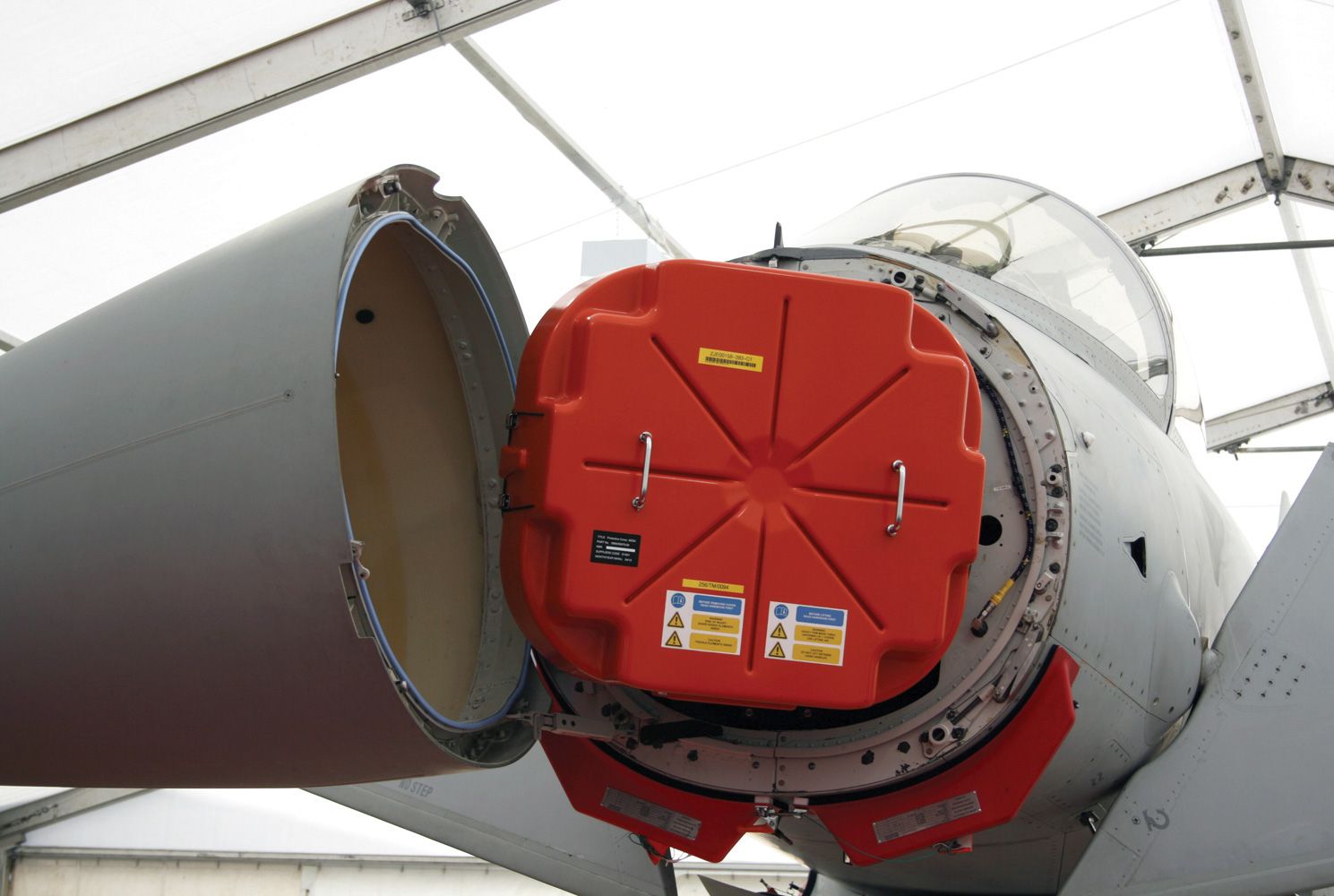Flight trials of the E-Scan radar have begun following the successful completion of ground tests using a UK Eurofighter Typhoon test aircraft, clearing the path towards full integration of the radar.
The ground tests were carried out on Instrumented Production Aircraft (IPA) 5 with the detection and tracking of airborne targets at significant range.
Flight tests have now begun at BAE Systems’ site in Warton, Lancashire, where IPA5 undertook a flight of around one hour in duration on Friday 8th July. A second test aircraft, IPA8 based in Germany, is also set to join the integration programme.
The trials are designed to ensure the radar and weapons system reach the required capability in time for first deliveries to the Kuwait Air Force, which became the aircraft’s eighth customer earlier this year.
Alan Barton, Delivery Director – Typhoon Radar Programmes for BAE Systems, said: “Following the successful completion of this ground testing phase, flight testing using IPA5 has now commenced, where we will prove in-flight what we have successfully demonstrated during the ground tests. The industry teams across Europe are working very collaboratively to drive this key Typhoon capability programme successfully forward.”
Andrew Cowdery, Chairman of Euroradar, said: “The Typhoon Captor-E provides significantly more power than most competing systems and we’re looking forward to demonstrating the combat edge this brings to the platform in live flight trials. Combined with the fighter’s large nose aperture and the ability to move the radar antenna, the Typhoon has a field of view of 200 degrees and the flight tests will show the discriminating advantages this will bring.”
The E-Scan Radar equipment and Weapons System capability will be incrementally enhanced over the next three years to enable the required capability (P3E Standard) to be available for the first deliveries to the Kuwait Air Force.
The new radar, provided by the Euroradar consortium, which is led by Leonardo-Finmeccanica, underpins the Typhoon’s current and future capability evolution.










